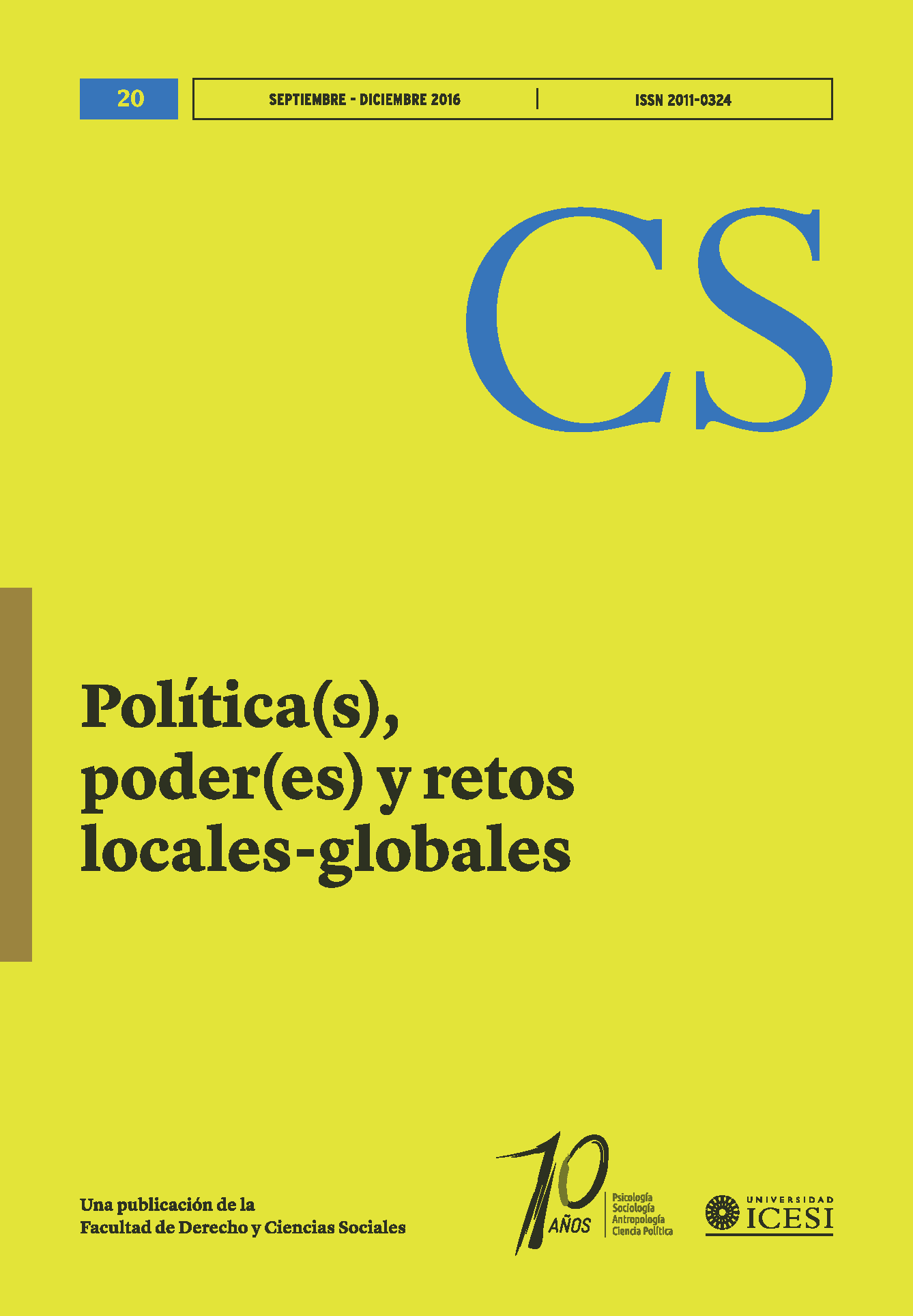Vulnerability and Information practices: experiences of (undocumented) Latino migrants in the U.S.
DOI:
https://doi.org/10.18046/recs.i20.2211Keywords:
Latino migrants, undocumented, Information practices, Information behavior, participatory photographyAbstract
This paper explores the Information practices (search, use and distribution of information) by Latino migrants, in particular those who are undocumented, at the US-Mexico border and in Seattle, Washington. Different information practices emerge in these contexts. At the border, we find more information poverty practices of the “small world” type, and these slowly broaden and consolidate as the migrants’ sense of belonging is strengthened after they live more time established in the US. Nonetheless, the vulnerability and impermanence remain, in the face of constant danger of deportation. The findings of a complementary study among communities in Colombia are presented in the next issue of this journal. Using participatory photography and unstructured interviews, we explore the experiences and the information practices among marginalized communities, and we relate them to how they experience impermanence during different stages of the migration experience. We also discuss how the migration stages may not be sufficient to account for the constant changes and iterations in the experiences of migrants in our study.Downloads
References
Baron, L. F., Neils, M., & Gomez, R. (2013). Crossing new borders: computers, mobile phones, transportation and English language among Hispanic day laborers in Seattle. Journal of the American Society for Information Science and Technology (JASIST), 64(5).
Blakeley, K. (2015, September 27). Mark Zuckerberg wants to bring Facebook to migrants. Daily Mail.
Bronsam, G. (n.d.). Norway is using Facebook to send a stark message to migrants. BBC News. Retrieved from http://www.bbc.com/news/magazine-34813650
Caidi, N., Allard, D., & Quirke, L. (2010). Information practices of immigrants. Annual Review of Information Science and Technology, 44(1), 491–531.
Carter, M., & Grover, V. (2015). Me, My Self, and I (T): Conceptualizing Information Technology Identity and its Implications. MIS Quarterly, 39(4).
Chatman, E. A. (1996). The Impoverished Life-World of Outsiders. Journal of the American Society for Information Science, 47, 193–206.
Chatman, E. A. (1999). A theory of life in the round. Journal of the Association for Information Science and Technology, 50(3), 207.
Chatman, E. A., & Pendleton, V. E. (1995). Knowledge gap, information-seeking and the poor. The Reference Librarian, 23(49-50), 135–145.
Chomsky, A. (2014). Undocumented: how immigration became illegal. Beacon Press.
COHA. (n.d.). Young Voices From the Border: Fear and Unaccompanied Migrant Children. Retrieved from http://www.coha.org/young-voices-from-the-border-fear-and-unaccompanied-migrant-children/
Cunningham, E. (2015, September 16). Facebook is the new travel guide for Iraqis headed to Europe - The Washington Post. The Washington Post. Retrieved from http://wpo.st/YUAb0
Ensor, J. (2015, September 20). The Facebook group helping migrants reach Europe. The Telegraph. Retrieved from http://www.telegraph.co.uk/news/worldnews/europe/croatia/11877508/The-Facebook-group-helping-migrants-reach-Europe.html
Fisher, K., Marcoux, E., Miller, L., Sanchez, A., & Ramirez Cunningham, E. (2004). Information Behavior of Migrant Hispanic Farm Workers and their Families in the Pacific Northwest. Information Research, 10. Retrieved from http://informationr.net/ir/10-1/paper199.html
Gomez, R., & Vannini, S. (2015). Fotohistorias: Participatory Photography and the Experience of Migration. Charleston, SC: CreateSpace.
Gonzalez-Barrera, A., & Krogstad, J. M. (2014, October 2). U.S. deportations of immigrants reach record high in 2013. Retrieved June 8, 2015, from http://www.pewresearch.org/fact-tank/2014/10/02/u-s-deportations-of-immigrants-reach-record-high-in-2013/
ITEP. (2013). Undocumented Immigrants’ State and Local Tax Contributions. Washington DC, USA: Institute of Taxation and Economic Policy. Retrieved from http://www.itep.org/pdf/undocumentedtaxes.pdf
Izcara Palacios, S. P. (2012). Violencia contra inmigrantes en Tamaulipas. European Review of Latin American and Caribbean Studies, 93, 3–24.
Izcara Palacios, S. P. (2016). Los Transmigrantes Centroamericanos En México. Latin American Research Review, 50(4), 49–68. https://doi.org/10.1353/lar.2015.0050
Izcara Palacios, S. P. (2016). Violencia postestructural: migrantes centroamericanos y cárteles de la droga en México. Revista de Estudios Sociales, (56), 12–25.
Izcara Palacios, S. P., & Andrade Rubio, K. L. (2015). Causas e impactos de la deportación de migrantes centroamericanos de Estados Unidos a México. Estudios Fronterizos, 16(31), 239–271.
Jensen, B. (2002). Service to day laborers: a job libraries have left undone. Ref User Serv Q Reference & User Services Quarterly, 41, 228–33.
Nail, T. (2015). The Figure of the Migrant. Stanford, California: Stanford University Press.
Newell, B. C., & Gomez, R. (2014). Informal Networks, Phones and Facebook: Information Seeking and Technology Use by Undocumented Migrants at the U.S.-Mexico Border. Proceedings of iConference 2015, Rochester, NY. Retrieved from http://papers.ssrn.com/abstract=2539396
Newell, B., Gomez, R., & Guajardo, V. (2016). Information seeking, technology use, and vulnerability among migrants at the US-Mexico border. The Information Society. Retrieved from http://www.narcis.nl/publication/RecordID/oai:tilburguniversity.edu:publications%2F0fa2fd3c-2b33-45eb-be12-69f248c53ceb
Passel, J. S., & Cohn, D. (2011). Unauthorized Immigrant Population: National and State Trends, 2010 (Pew Research Center). Pew Hispanic Center. Retrieved from http://pewhispanic.org/files/reports/133.pdf#page=25
Perryman Group. (2008). An Analysis of the Economic Impact of Undocumented Workers on Business Activity in the US with Estimated Effects by State and by Industry. Waco, Texas, USA. Retrieved from http://www.ilw.com/articles/2008,1008-perryman.pdf
Reuters. (2014, July 5). Migrantes y “polleros” utilizan Facebook para acordar el cruce de frontera. La Jornada. Mexico. Retrieved from http://www.jornada.unam.mx/ultimas/2014/08/05/migrantes-y-polleros-utilizan-redes-sociales-para-organizar-paso-por-la-frontera-7977.html
Savolainen, R. (2008). Everyday information practices: a social phenomenological perspective. Scarecrow Press.
Schiller, N. G., Basch, L., & Blanc, C. S. (1995). From immigrant to transmigrant: Theorizing transnational migration. Anthropological Quarterly, 48–63.
Vannini, S., Gomez, R., & Guajardo, V. (2016). Security and Activism: Using participatory photography to elicit perceptions of Information and Authority among Hispanic migrants in the U.S. In Proceedings of iConference 2016. Philadelphia, PA.
Yefimova, K., Neils, M., Newell, B. C., & Gomez, R. (2015). Fotohistorias: Participatory Photography as a Methodology to Elicit the Life Experiences of Migrants. In Proceedings of HICSS 48. Hawaii. Retrieved from http://papers.ssrn.com/abstract=2482520
Downloads
Published
Issue
Section
License
Copyright (c) 2016 Ricardo Gómez

This work is licensed under a Creative Commons Attribution-NonCommercial 4.0 International License.
© Reserved Copyright
Material in this publication may be reproduced without authorization, provided the title, author and institutional source is acknowledged.
The content published in Revista CS is distributed under the Creative Commons BY-NC 4.0 Attribution/Recognition-NonCommercial 4.0 International license.
You are free to:
Share — copy and redistribute the material in any medium or format.
Adapt — remix, transform, and build upon the material.
Under the following terms:
Attribution — You must give appropriate credit , provide a link to the license, and indicate if changes were made . You may do so in any reasonable manner, but not in any way that suggests the licensor endorses you or your use.
NonCommercial — You may not use the material for commercial purposes.












